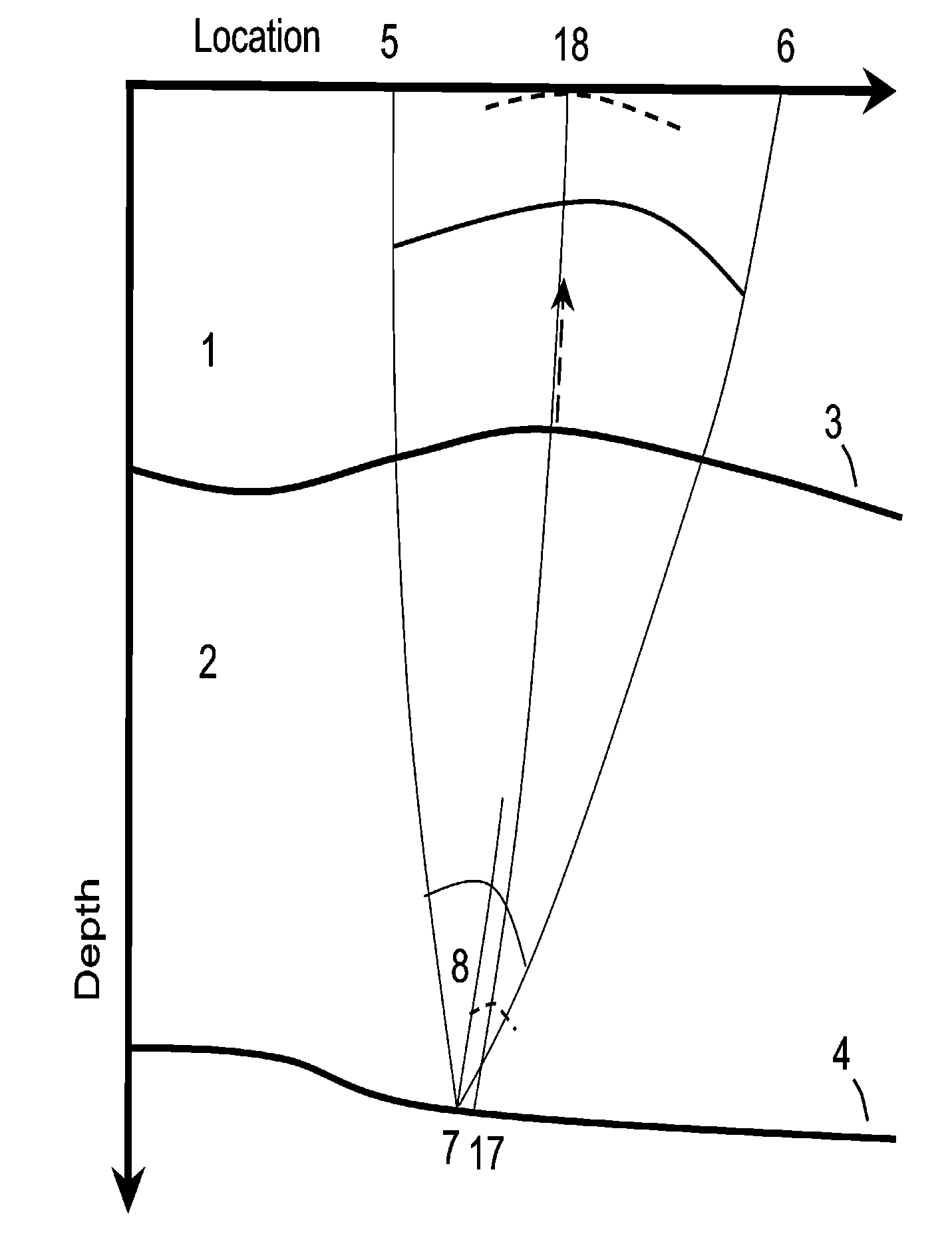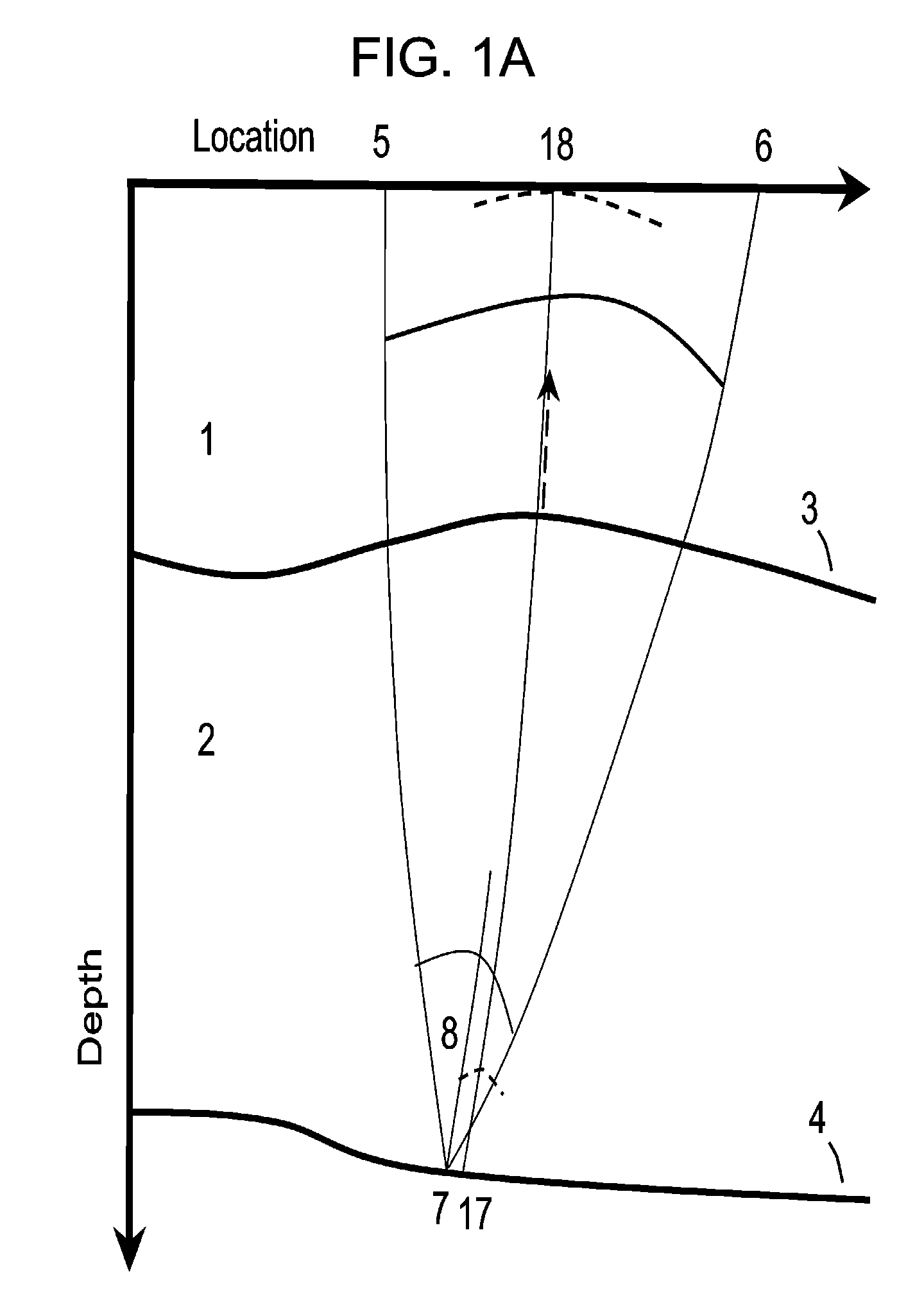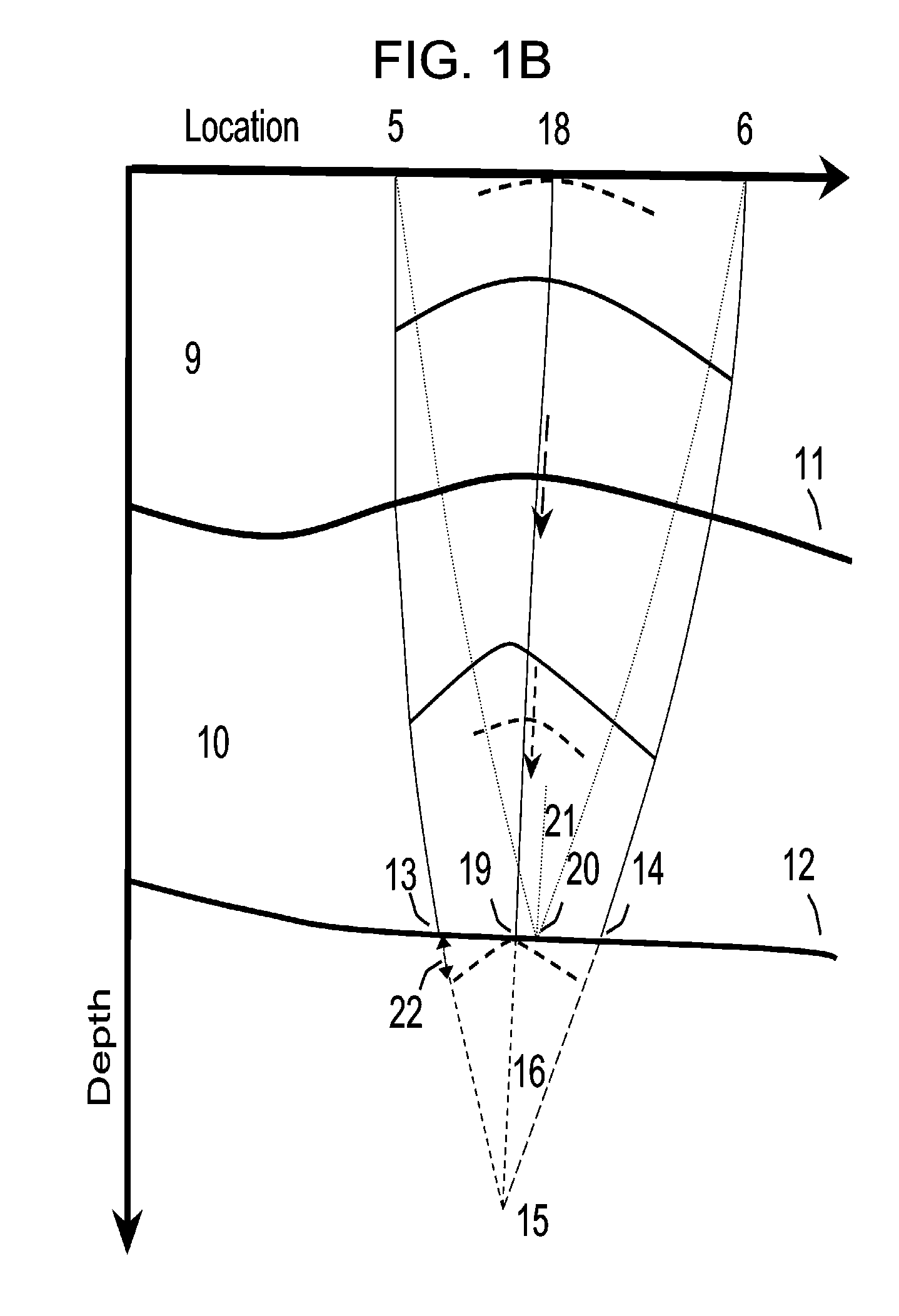Determination of depth moveout and of residual radii of curvature in the common angle domain
a common angle and moveout technology, applied in the direction of measuring devices, scientific instruments, instruments, etc., can solve the problems of inability to correct the migrated gathers for a continuous analysis of the reflecting horizon of interest, and the assumption of horizontal layering and constant velocity is not realistic for typical geological formations, so as to achieve the effect of further reducing the work load
- Summary
- Abstract
- Description
- Claims
- Application Information
AI Technical Summary
Benefits of technology
Problems solved by technology
Method used
Image
Examples
Embodiment Construction
[0026]For purposes of understanding the invention the underlying physical principle of residual depth moveout correction is illustrated in FIGS. 1A and 1B. FIG. 1A shows a geological model of the subsurface consisting of two geological layers 1 and 2 which are defined by vertically and laterally varying propagation velocities and the reflection boundaries 3 and 4. For illustration purposes it is assumed in FIGS. 1A and 1B that the velocity model can be described by geological formations, with a separate velocity distribution for each formation. This approach is used in many geological situations, however, this restriction is not necessary: for the application of the invention a general velocity model as a function of depth and lateral position can be used.
[0027]A ray between the shot position 5, reflection boundary 4 and receiver position 6 is reflected at the reflection boundary at position 7 with reflection angle 8. Both legs of the reflected ray are backward propagated in time in...
PUM
 Login to View More
Login to View More Abstract
Description
Claims
Application Information
 Login to View More
Login to View More - R&D
- Intellectual Property
- Life Sciences
- Materials
- Tech Scout
- Unparalleled Data Quality
- Higher Quality Content
- 60% Fewer Hallucinations
Browse by: Latest US Patents, China's latest patents, Technical Efficacy Thesaurus, Application Domain, Technology Topic, Popular Technical Reports.
© 2025 PatSnap. All rights reserved.Legal|Privacy policy|Modern Slavery Act Transparency Statement|Sitemap|About US| Contact US: help@patsnap.com



